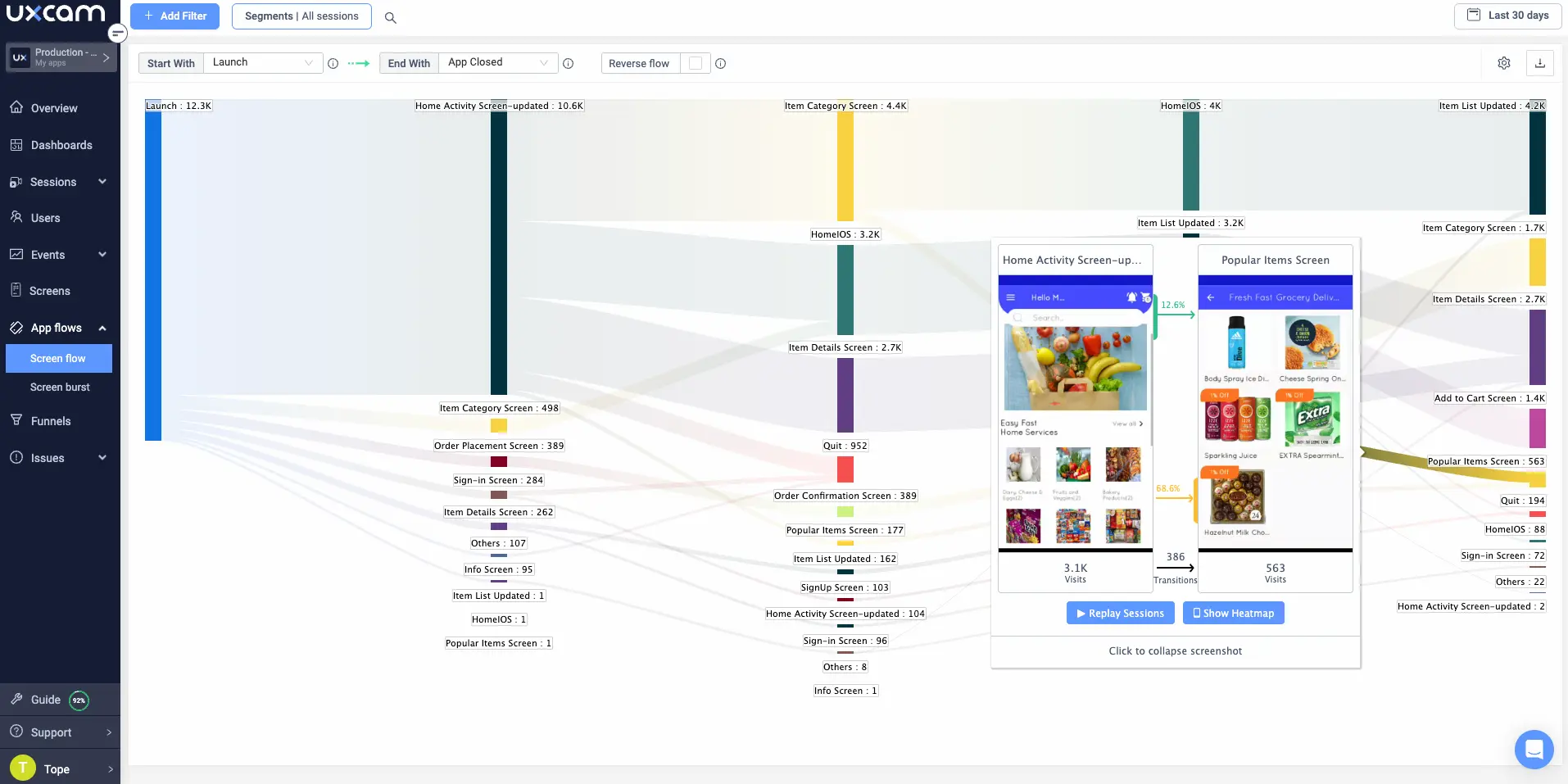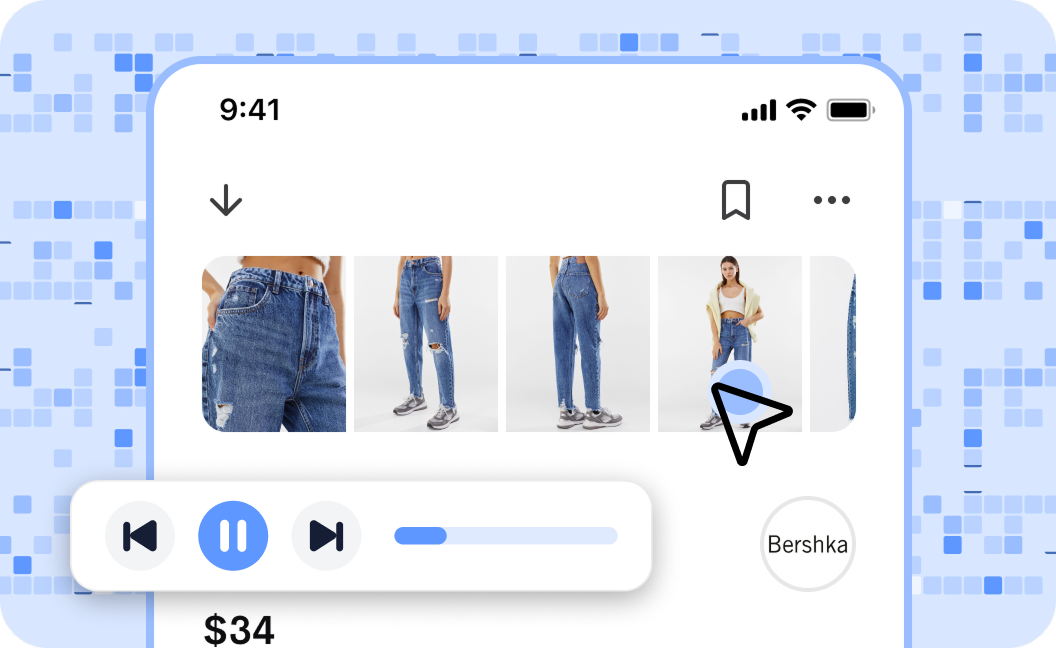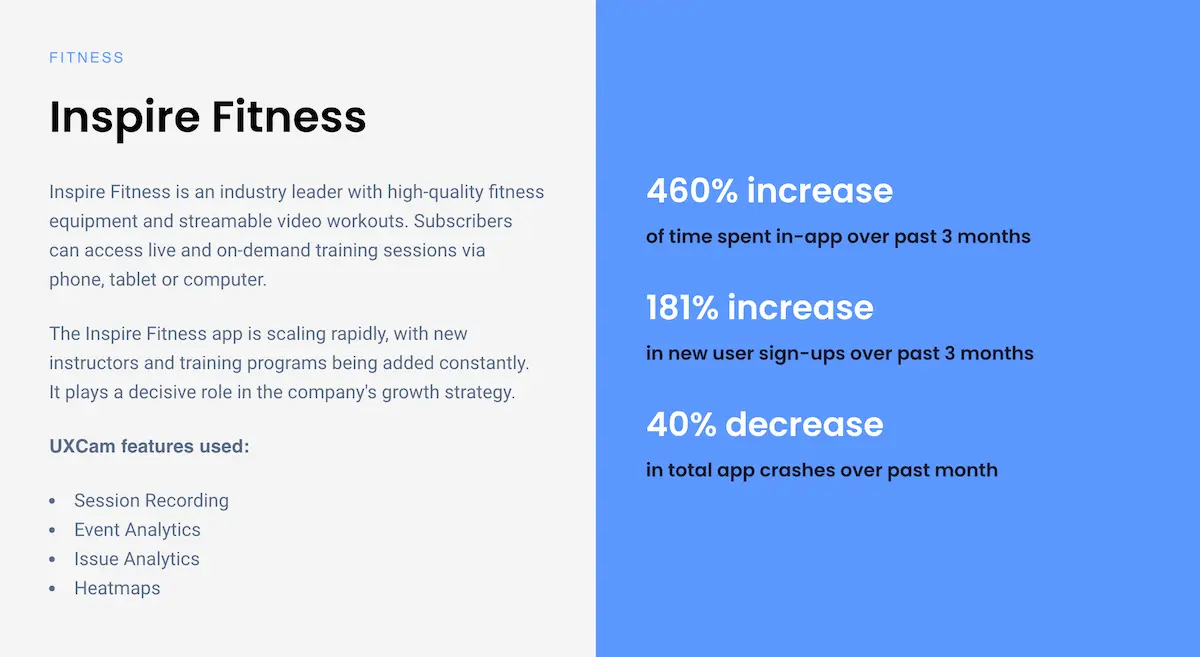Back to blog
5 MIN READ
Customer Needs Analysis - How to Assess & Satisfy User Needs
PUBLISHED
8 January, 2024

Product Analytics Expert
User expectations are dynamic, and competition is fierce when it comes to developing products that resonate. As a product manager, your ability to decipher and address user requirements is paramount and takes more than just technical prowess.
Enter customer needs analysis—a process that helps you understand what your user base wants from your product.
In this guide, we give your product team the lowdown on customer needs analysis. We show you what it is, why it’s essential for your product's success, and how you can create an effective strategy for uncovering user needs.
Thousands of mobile product teams trust UXCam’s comprehensive app analytics to uncover exactly what their users are doing. We know a thing or two about understanding user behavior and needs, and we’re here to share our insights with you.
Now, let’s get back to the topic at hand—customer needs analysis.
So let’s get started!
Helpful summary
Overview: This article discusses customer needs analysis, with strategy steps, and how the UXCam platform helps.
Why you can trust us: UXCam is a leading, mobile-first analytics platform. Our comprehensive feature set is designed to gather, analyze, and interpret all your user’s in-app behaviors for an empathic understanding of their preferences and challenges.
Why this is important: A good customer needs analysis strategy offers several benefits, including enhanced UX and better market positioning.
Action points: Use our steps to develop an effective customer needs analysis strategy to prioritize features effectively and for long-term success and sustainability.
Further research: Read our article on customer needs analysis examples for real-life examples.
What is customer needs analysis?
Customer needs analysis is a systematic process that involves gathering, evaluating, and understanding your customers through the lenses of:
Expectations
Requirements
Preferences
The aim is to understand what your customers want and need so that you can align your products and strategies to meet their expectations.
Benefits of customer needs analysis for mobile app teams
User-centric design: Your customers have design preferences—a customer needs analysis can help you identify those preferences and incorporate them into your app.
Improved customer satisfaction: By understanding your customers’ needs, you can make sure that your app meets their expectations, leading to higher levels of satisfaction.
Increased user retention: When an app meets the needs and preferences of its users, they're more likely to continue using it, resulting in higher retention rates.
Better product development: Customer needs analysis provides valuable insights into what features and functionalities your customers value the most.
How to conduct a customer needs analysis
Here's how to conduct a competitive analysis using customer needs;
Define scope and objectives
Conduct user research
Create a user persona
Use data analytics
Keep on top of competitors and technological trends
Analyze findings, prioritize results, and iterate
Step 1 - Define scope and objectives
The first thing on the agenda is determining a scope and setting objectives. Skip this step, and you may find yourself getting overwhelmed with the sheer number of things you could be analyzing.
Here’s how to set a scope:
Identify the specific user group or target audience you want to analyze. This could be based on demographics, behavior, interests, or any other relevant factor.
Decide which aspects of your app you would like to focus on. Is it the design, usability, features, or overall performance?
Clearly define what success looks like for your analysis. What metrics will you use to measure success? How will you determine if your app is meeting customer needs?
Then, set objectives that are within the scope you set. These objectives should be specific and measurable, so you can track your progress and make adjustments if needed.
Step 2 - Conduct user research
Use different research methods to learn about your target audience. Popular techniques used for mobile apps include:
Surveys and questionnaires: To gather quantitative data on preferences, behaviors, and opinions.
In-depth interviews: To gather qualitative insights on experiences, motivations, and detailed feedback.
Social media listening: To monitor social media for real-time feedback, mentions, and reviews related to your app.
User journey analysis: To visualize the end-to-end user journey to find bottlenecks and unusual behavior.

Heatmaps and session recordings: To track and analyze user behavior on the app visually.


Segmentation: To extract more targeted, meaningful insights from a data set by focusing on specific groups denied by properties and characteristics.
If you’re in the early stages of app development, prototype testing, and card sorting are used to validate early design concepts, structure, and navigation preferences. You can also use our session recordings to analyze the Beta versions of your app.
Step 3 - Create a user persona
Based on the information gathered during user research, develop a detailed customer persona to represent your target audience’s diverse needs and preferences accurately, including details like:
Demographic information (age, gender, income, location)
Behavioral information (habits, interests, hobbies)
Psychographic information (values, beliefs, attitudes)
Goals and pain points
Quotes (optional — to humanize and ground the persona)
Step 4 - Use data analytics
Our customers get expressive results when using our platform.
Take Inspire Fitness, for example—they needed to make data-driven decisions from a qualitative perspective regarding the type of content to publish on their app. They used UXCam's mobile app analytics solution to support their growth and release strategies by understanding their customers better. Leveraging our retention analysis capabilities and other meaningful insights, they achieved a 460% increase in time spent in-app.

UXCam is powerful for data-driven insights to guide improvements and will help you keep up with evolving needs. Here are some key metrics to measure for a comprehensive understanding:
User retention rate: What is the percentage of users continuing to use the app over time? It highlights an issue if there is a significant drop in retention.
Session duration: The average time spent using the app in a single session. Longer sessions indicate higher engagement.
Conversion rates: The percentage of users completing a specific action or goal. It indicates how effective your app is in guiding users to desired actions.
Feature adoption: The percentage of users actively using specific features or functionality. It shows you which features are popular and which need promotion or improvement.
Step 5 - Keep on top of competitors and technological trends
Evaluate your competitor's mobile apps to learn industry standards and user expectations. Establish areas where you can differentiate your app or make improvements. To do this effectively, you can:
Understand the competitor's interface design and overall UX. For example, navigation and flow, design elements like images and color schemes, and a predictable user experience.
Compare features and functionality. Assess how effective their features and functionality are. Consider creating a list of the core functionalities, unique offerings, and additional services.
Analyze user reviews and ratings. Check out reviews and app ratings to learn user sentiments and identify common issues.
All in all, stay in the loop about current and emerging mobile trends and technologies. Examine how these trends influence or align with user expectations.
Step 6 - Analyze findings, prioritize results, and iterate
Focus on customer needs based on the impact on user satisfaction and business objectives. Analyze your findings to refine essential insights to inform app development and improvements.
Base app feature additions and improvement on analysis. Follow an iterative design process comprising user feedback and continuous refinement.
UXCam supports customer needs analysis
Customer needs analysis is more than just a business strategy—it's your path to achieving lasting customer satisfaction and success. As you navigate through this ever-evolving industry, your ability to adapt and meet changing customer needs will give you a competitive edge.
UXCam is a mobile-first analytics platform that powers data-driven development for over 37,000 leading mobile products. Request a demo to learn more about how we can help with your customer needs analysis.
You might also be interested in these;
Customer experience dashboard examples
How to use customer engagement analytics to improve CX
Customer experience analytics - The product team’s guide
Customer journey optimization: 6 actionable steps
Mobile App tracking: Practical guide and best tools
AUTHOR

Tope Longe
Product Analytics Expert
Ardent technophile exploring the world of mobile app product management at UXCam.
What’s UXCam?
Related articles
App Analytics
Mobile App Tracking: Practical Guide & Best Tools [2026]
The best tracking tools for mobile...

Jonas Kurzweg
Product Analytics Expert
App Analytics
Top Analytics SDKs 2026
Pick the right analytics SDKs to improve your app's...

Jonas Kurzweg
Product Analytics Expert
Product best practices
8 Best UX Analytics Tools and Software We’ve Tested 2025
A good UX design is key when it comes to user satisfaction. Learn about five of the best UX analytics tools you can use to get valuable insights about user...

Jonas Kurzweg
Product Analytics Expert


